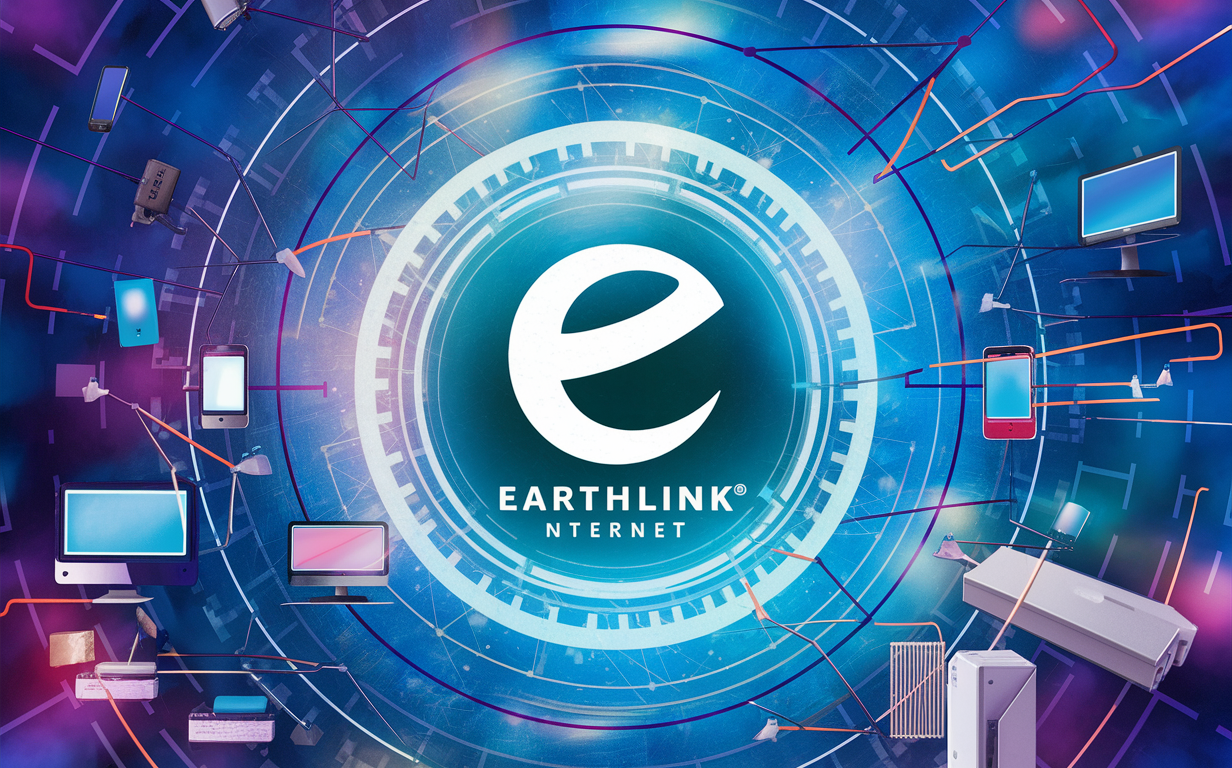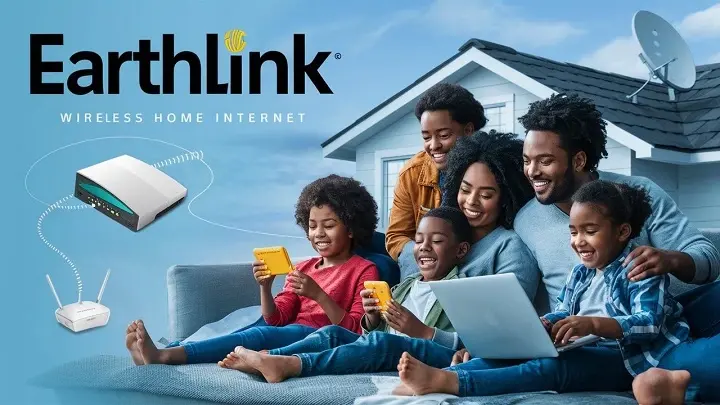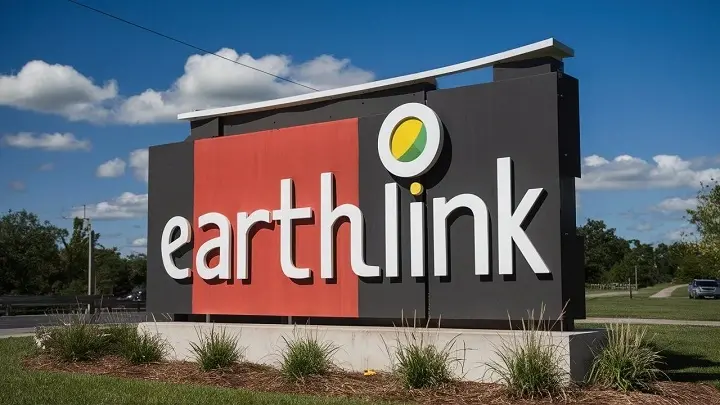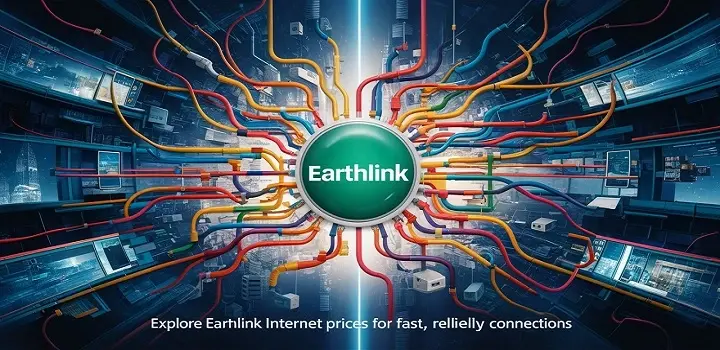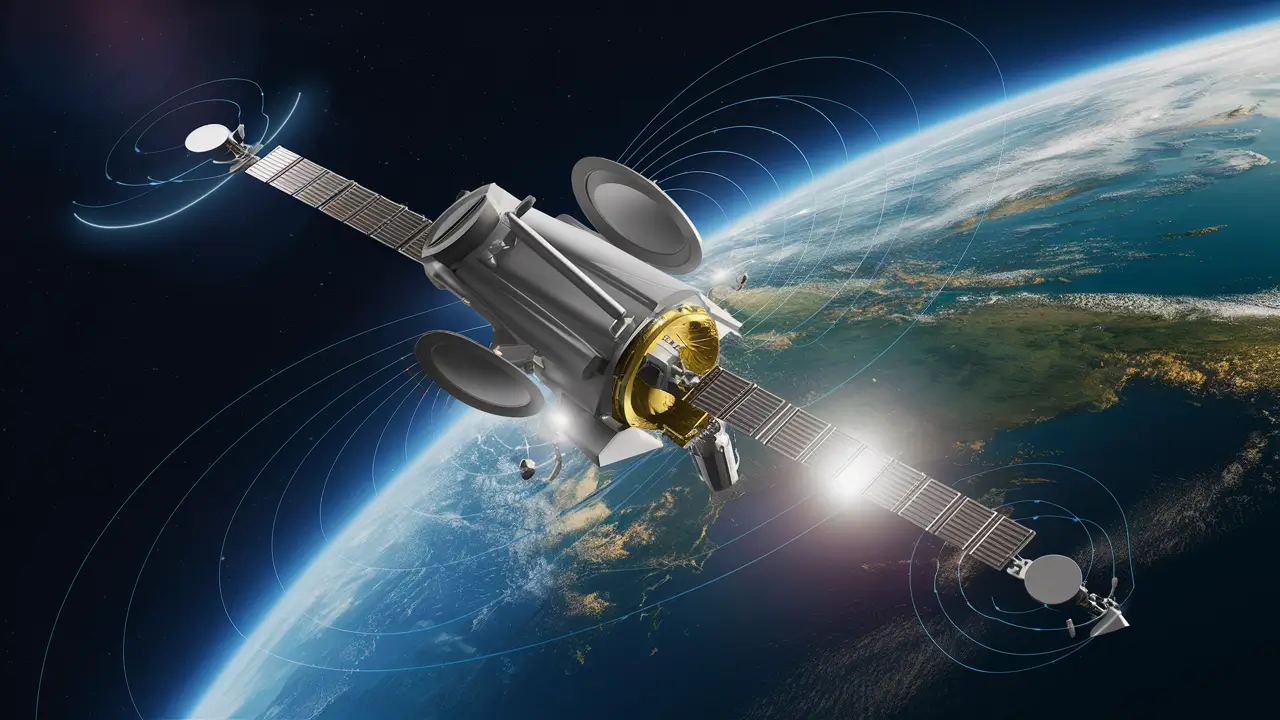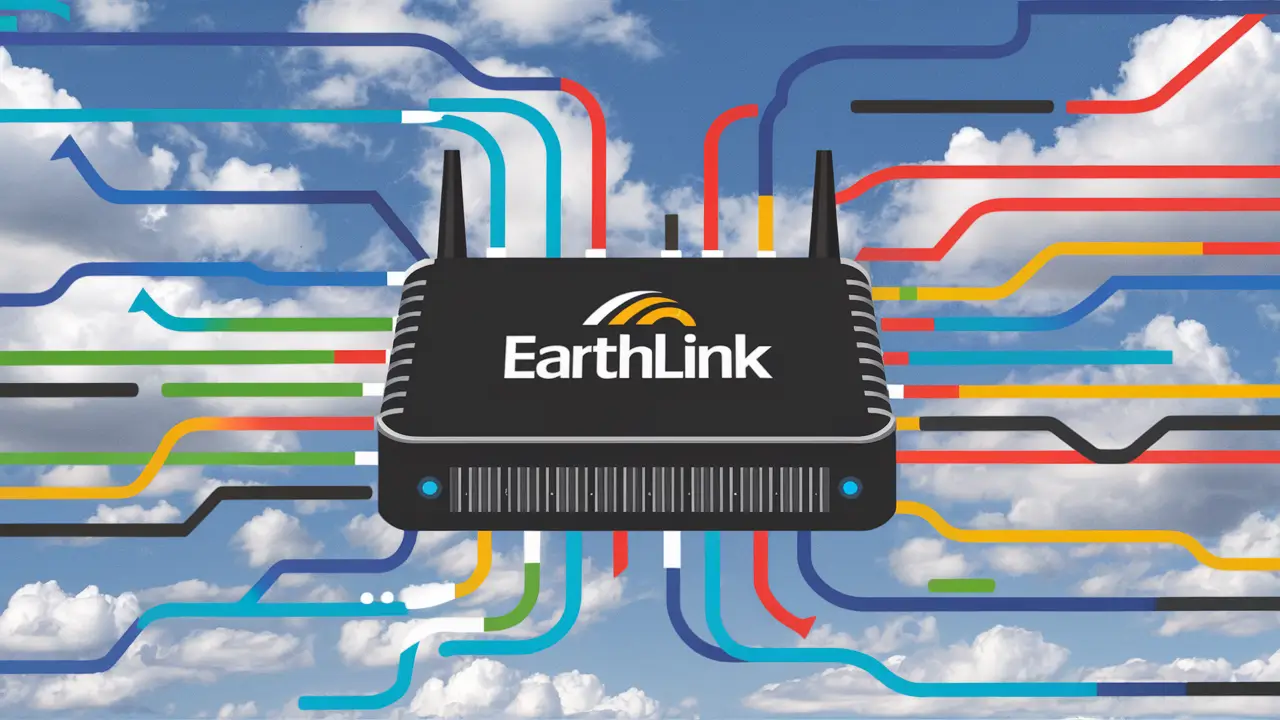How Much Are Earthlink Internet Plans?
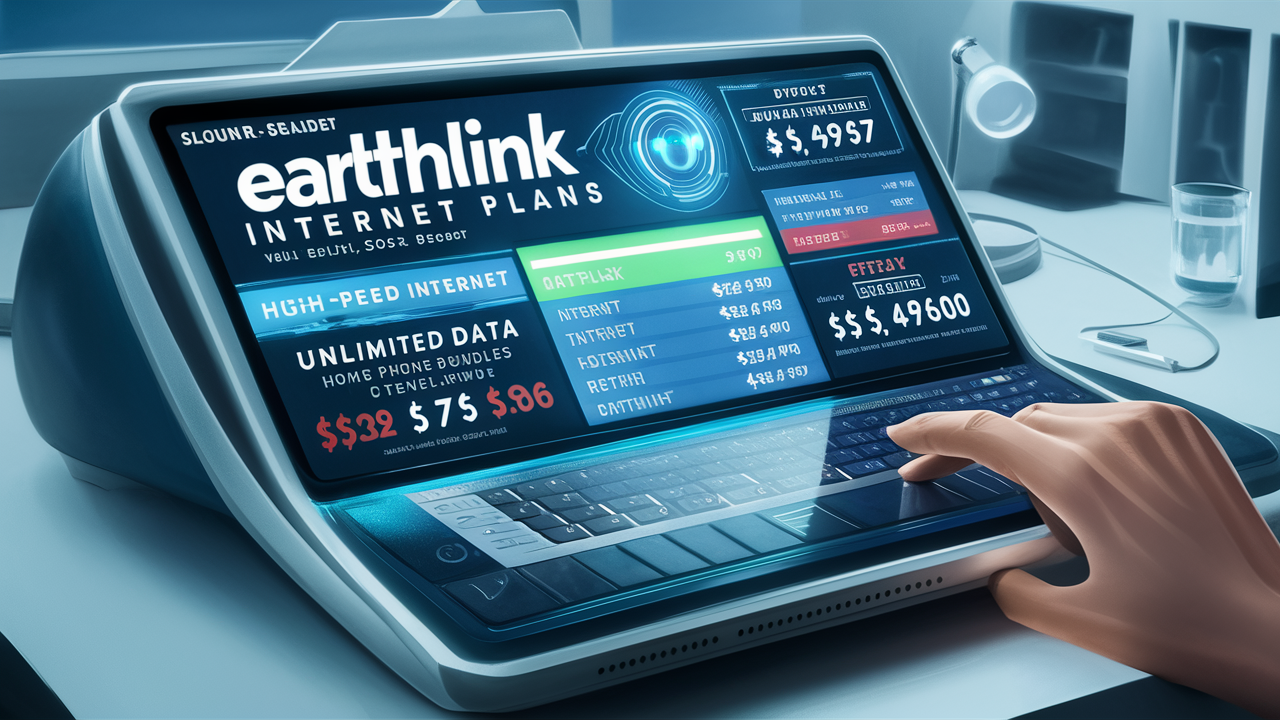
Understanding EarthLink internet plan costs is crucial for budget-conscious consumers. This guide breaks down typical pricing, factors influencing cost, and how to find the best EarthLink deal for your needs in 2025.
Understanding Earthlink Internet Plan Pricing
When you're looking for a new internet service provider, one of the most significant factors guiding your decision is the cost. EarthLink, a long-standing player in the telecommunications industry, offers a range of internet plans designed to cater to various user needs and budgets. However, pinpointing an exact, universal price for "EarthLink internet plans" can be challenging due to a multitude of variables. This comprehensive guide aims to demystify EarthLink's pricing structure for 2025, providing you with the insights needed to make an informed choice.
EarthLink's pricing is not a one-size-fits-all scenario. It fluctuates based on the type of internet technology available in your specific location, the speed tiers you opt for, any promotional offers currently running, and whether you bundle services. Understanding these dynamics is the first step toward accurately answering the question, "How much are EarthLink internet plans?" We'll delve into each of these aspects to give you a clear picture of what to expect financially when considering EarthLink for your home or business.
Key Factors Influencing EarthLink Costs
Before we dive into specific plan details, it's essential to understand the primary drivers behind EarthLink's pricing. These factors can significantly impact the monthly bill, so knowing them upfront will help you navigate the options more effectively.
1. Internet Technology Type
EarthLink provides internet access through several different technologies, and each has a distinct cost structure. The availability of these technologies is geographically dependent.
- DSL (Digital Subscriber Line): This is often the most budget-friendly option. DSL uses existing telephone lines to deliver internet. Speeds are generally lower than other technologies, making it suitable for basic browsing, email, and light streaming. Because it's an older technology, it's often more widely available in areas where cable or fiber might not be.
- Cable Internet: Cable internet utilizes the same coaxial cables that deliver cable television. It typically offers higher speeds than DSL and is a popular choice for many households. The cost is usually in the mid-range, balancing speed and affordability.
- Fiber Optic Internet: Fiber is the most advanced and fastest internet technology available. It uses light signals transmitted through glass fibers. Fiber plans offer symmetrical upload and download speeds and are ideal for heavy users, gamers, and households with multiple connected devices. However, fiber is also the most expensive option and its availability is limited to specific areas, often urban and suburban regions.
- Satellite Internet: For users in very rural or remote locations where DSL, cable, or fiber are unavailable, satellite internet is an option. It involves a satellite dish installed at your home. Satellite plans are typically more expensive, come with data caps, and can experience higher latency (delay) due to the distance the signal travels.
2. Speed Tiers and Data Needs
Internet plans are categorized by their download and upload speeds, measured in megabits per second (Mbps). Higher speeds naturally come with a higher price tag.
- Basic Speeds (e.g., 25-100 Mbps): Suitable for single users or small households with light internet usage (email, web browsing, occasional streaming). These are the most affordable tiers.
- Mid-Range Speeds (e.g., 100-500 Mbps): Ideal for families, multiple users, and those who stream HD content, play online games, or frequently download larger files.
- High Speeds (e.g., 500 Mbps - 1 Gbps+): Designed for power users, households with many connected devices, 4K streaming, professional remote work, and demanding online activities. These are the premium, most expensive plans.
Your data needs also play a role. While many EarthLink plans offer unlimited data, some satellite plans may have strict data caps, and exceeding them can result in slower speeds or additional charges. It's crucial to assess how you use the internet to choose a speed tier that meets your needs without overpaying for excessive bandwidth.
3. Promotional Offers and Contracts
Internet providers, including EarthLink, frequently offer introductory pricing or special deals to attract new customers. These promotions can significantly reduce the monthly cost for a limited period, often the first 12 or 24 months.
- Introductory Pricing: This is the most common type of promotion, where the advertised price is lower than the standard rate. It's vital to understand the "regular" price after the promotional period ends, as your bill will increase.
- Bundling Services: Sometimes, EarthLink might offer discounts if you bundle internet with other services, such as home phone. However, EarthLink primarily focuses on internet services, so bundling options might be less prevalent compared to larger, diversified telecommunications companies.
- Contract Length: Many internet plans require a contract, typically 12 or 24 months. Signing a contract often locks in a lower promotional price. However, early termination fees can be substantial if you break the contract. Some providers also offer month-to-month plans, which may have a slightly higher standard rate but offer more flexibility.
EarthLink Internet Plan Tiers and Pricing (2025)
It's important to note that EarthLink's specific pricing and plan names can change and vary significantly by location. The figures provided below are *estimates* based on typical offerings and market trends for 2025. For the most accurate and up-to-date pricing for your address, you must visit the EarthLink website or contact their sales department directly.
Estimated DSL Plans
EarthLink's DSL service is generally positioned as an affordable option for basic internet needs. Availability is widespread, especially in areas underserved by cable or fiber.
| Plan Name (Example) | Download Speed (Mbps) | Upload Speed (Mbps) | Estimated Monthly Price (Promotional) | Estimated Monthly Price (Regular) | Best For |
|---|---|---|---|---|---|
| EarthLink Basic Internet | Up to 25 | Up to 3 | $49.95 - $59.95 | $69.95 - $79.95 | Light browsing, email, single user |
| EarthLink Standard Internet | Up to 50 | Up to 5 | $59.95 - $69.95 | $79.95 - $89.95 | Small households, multiple basic tasks |
Note: DSL speeds can be affected by distance from the local exchange.
Estimated Cable Internet Plans
Cable internet from EarthLink offers a good balance of speed and price, making it a popular choice for many households. These plans typically provide higher speeds and more consistent performance than DSL.
| Plan Name (Example) | Download Speed (Mbps) | Upload Speed (Mbps) | Estimated Monthly Price (Promotional) | Estimated Monthly Price (Regular) | Best For |
|---|---|---|---|---|---|
| EarthLink Cable 100 | Up to 100 | Up to 10 | $59.95 - $74.95 | $79.95 - $94.95 | Small to medium households, HD streaming |
| EarthLink Cable 300 | Up to 300 | Up to 20 | $69.95 - $84.95 | $89.95 - $104.95 | Medium to large households, gaming, multiple devices |
| EarthLink Cable 500 | Up to 500 | Up to 30 | $79.95 - $94.95 | $99.95 - $114.95 | Heavy users, 4K streaming, remote work |
Note: Cable internet speeds can sometimes fluctuate based on neighborhood usage.
Estimated Fiber Optic Plans
EarthLink's fiber optic service, where available, provides the fastest and most reliable internet experience. These plans are premium and priced accordingly.
| Plan Name (Example) | Download Speed (Mbps) | Upload Speed (Mbps) | Estimated Monthly Price (Promotional) | Estimated Monthly Price (Regular) | Best For |
|---|---|---|---|---|---|
| EarthLink Fiber 300 | Up to 300 | Up to 300 | $69.95 - $89.95 | $89.95 - $109.95 | Households needing fast, symmetrical speeds |
| EarthLink Fiber 500 | Up to 500 | Up to 500 | $79.95 - $99.95 | $99.95 - $119.95 | Power users, gamers, 4K streaming, remote professionals |
| EarthLink Fiber 1 Gig | Up to 1000 | Up to 1000 | $89.95 - $109.95 | $109.95 - $129.95 | Extremely heavy usage, future-proofing |
Note: Fiber availability is limited. Symmetrical speeds mean upload speeds are as fast as download speeds.
Estimated Satellite Internet Plans
Satellite internet is typically the most expensive option per Mbps and often comes with data allowances. EarthLink's satellite offerings are designed for areas with no other viable options.
| Plan Name (Example) | Download Speed (Mbps) | Upload Speed (Mbps) | Monthly Data Allowance (GB) | Estimated Monthly Price (Promotional) | Estimated Monthly Price (Regular) | Best For |
|---|---|---|---|---|---|---|
| EarthLink Satellite Basic | Up to 25 | Up to 2 | 50 GB | $79.95 - $99.95 | $99.95 - $119.95 | Essential internet use in remote areas |
| EarthLink Satellite Plus | Up to 50 | Up to 3 | 100 GB | $99.95 - $119.95 | $119.95 - $139.95 | Moderate usage in remote areas |
Note: Satellite plans can experience higher latency and are affected by weather. Exceeding data caps usually results in throttled speeds.
Example Scenarios
Let's consider a few hypothetical scenarios to illustrate how pricing might play out:
- Scenario 1: A single student living alone in a suburban area where cable is available. They primarily use the internet for browsing, checking email, streaming music, and occasional HD video calls. An EarthLink Cable 100 plan at a promotional price of $65/month for the first 12 months might be ideal. After the promotion, it could rise to $85/month.
- Scenario 2: A family of four in a mid-sized town with fiber optic availability. They stream multiple devices in 4K, two children play online games, and parents work from home occasionally. An EarthLink Fiber 500 plan at a promotional $85/month, potentially rising to $105/month after the promo, would be a strong contender.
- Scenario 3: A remote cabin owner with no access to DSL, cable, or fiber. They need internet for occasional email, checking weather reports, and very light browsing. An EarthLink Satellite Basic plan at $85/month with 50 GB of data might be the only option, though it's significantly more expensive for the performance.
Comparing EarthLink Plans to Competitors
To truly understand the value of EarthLink's plans, it's helpful to see how they stack up against other major internet providers in 2025. Keep in mind that competitor pricing also varies by location and technology.
Speed vs. Price Comparison
Generally, EarthLink's pricing is competitive, especially for its DSL and cable offerings. However, they might not always be the absolute cheapest for the highest speeds compared to providers like Xfinity, Spectrum, or Verizon Fios, particularly when those providers have aggressive introductory offers or are deploying the latest fiber technology.
- DSL: EarthLink's DSL plans are often priced similarly to or slightly higher than AT&T's or Verizon's DSL offerings, but they can be a good alternative if those providers aren't available.
- Cable: EarthLink's cable internet prices are generally in line with major cable providers like Xfinity and Spectrum. The key differentiator will be the specific promotional deals and the exact speeds offered in your area.
- Fiber: For fiber internet, EarthLink's pricing is competitive, but providers like Google Fiber or local municipal fiber networks might offer slightly lower prices for comparable speeds, though availability is often more restricted.
Contract vs. No-Contract Options
EarthLink often emphasizes its no-contract options, which is a significant advantage for consumers who value flexibility. Many competitors, especially cable companies, heavily push 12 or 24-month contracts that come with lower introductory rates but hefty early termination fees. If you anticipate moving or prefer not to be locked in, EarthLink's no-contract stance can be a major selling point, even if the standard monthly rate is slightly higher.
Data Caps
A crucial comparison point is data caps. While most EarthLink DSL and cable plans come with unlimited data, satellite plans do have data limits. Many competitors, particularly in the cable and fiber space, also offer unlimited data. However, some providers might still impose data caps on certain tiers or for specific technologies, so always verify this detail.
Availability
EarthLink's strength lies in its broad availability, particularly its DSL service, which reaches many areas that other providers might not serve. If you're in a rural or underserved location, EarthLink might be one of your only viable options, regardless of price comparisons.
Finding the Best EarthLink Deal
Securing the most advantageous EarthLink internet plan requires a proactive approach. Here’s how to maximize your savings and ensure you get the best value:
1. Verify Availability at Your Specific Address
This is the absolute first step. Visit the EarthLink website and enter your exact street address. This will immediately show you which internet technologies (DSL, Cable, Fiber) and specific plans are available to you. Don't rely on general area information; precise address verification is key.
2. Look for Current Promotions
EarthLink, like all ISPs, runs promotions. These are often highlighted on their website for available plans. Pay close attention to:
- Introductory pricing: Note the monthly cost and how long the promotion lasts (e.g., 12 or 24 months).
- Regular pricing: Crucially, find out what the price will be *after* the promotional period ends. This is often significantly higher.
- Bundles: While less common for EarthLink, check if any service bundles offer additional savings.
- New customer offers: Promotions are almost exclusively for new subscribers.
3. Understand Contract Terms
If a plan requires a contract, thoroughly read the terms and conditions. Pay special attention to:
- Contract length: 12 months, 24 months, etc.
- Early Termination Fees (ETFs): How much will it cost if you need to cancel before the contract ends? This can range from $10 to $20 per month remaining on the contract.
- Price guarantees: Does the provider guarantee the price for the entire contract term, or can it increase?
If flexibility is important, prioritize EarthLink's no-contract plans, even if the initial monthly rate is slightly higher than a competitor's contract offer.
4. Compare Speeds to Your Actual Needs
Resist the urge to buy the fastest plan available unless you genuinely need it. Overpaying for unused bandwidth is a common mistake. Consider:
- Number of users: How many people will be using the internet simultaneously?
- Types of activities: Basic browsing, streaming (HD, 4K), online gaming, video conferencing, large file downloads/uploads.
- Number of devices: Smart TVs, phones, tablets, computers, smart home devices.
For instance, a single person who primarily browses and streams Netflix might be perfectly happy with a 100 Mbps plan, saving money compared to a 500 Mbps or 1 Gbps plan.
5. Read the Fine Print on Fees
Beyond the monthly service fee, be aware of potential additional costs. We'll cover these in more detail later, but they can include installation fees, equipment rental fees, and activation fees.
6. Contact EarthLink Directly
While online tools are convenient, speaking with an EarthLink representative can sometimes uncover deals or plan options not readily advertised online. They can also clarify any questions you have about pricing, speeds, and terms.
7. Consider Third-Party Reviews and Comparison Sites
Websites that review internet providers can offer insights into customer satisfaction, typical pricing experiences, and potential hidden fees. However, always cross-reference this information with EarthLink's official site for the most accurate, real-time data.
EarthLink Customer Service and Support
When evaluating an internet provider, the cost of the plan is paramount, but the quality of customer service and technical support is also a critical factor. A low monthly bill is of little comfort if you can't get help when you need it.
EarthLink's Support Channels
EarthLink typically offers multiple ways for customers to get assistance:
- Phone Support: Available for sales, technical issues, and billing inquiries.
- Online Chat: Often available on their website for quick questions and support.
- Email Support: For less urgent matters or detailed inquiries.
- Knowledge Base/FAQ: A comprehensive online resource for self-help, troubleshooting common issues, and understanding services.
Customer Satisfaction Ratings
Customer satisfaction with EarthLink's support can vary. While some users report positive experiences with knowledgeable and helpful agents, others have expressed frustration with wait times or resolution effectiveness. It's advisable to check recent customer reviews on independent platforms to gauge current service quality.
Technical Support
For technical issues, EarthLink's support aims to diagnose and resolve problems remotely. This might involve guiding you through troubleshooting steps for your modem, router, or connection. If a remote fix isn't possible, they will arrange for a technician visit.
Billing and Account Management
Managing your account online through the EarthLink portal is usually straightforward. You can typically view bills, make payments, update account information, and sometimes even change your plan. Understanding your bill and the pricing structure is essential to avoid unexpected charges.
Additional EarthLink Fees to Consider
Beyond the advertised monthly plan price, several other fees can affect the total cost of your EarthLink internet service. Being aware of these upfront can prevent surprises:
1. Installation Fees
EarthLink may charge an installation fee, especially if a professional technician is required to set up your service. This fee can range from $50 to $150 or more, depending on the complexity of the installation and the technology used (e.g., fiber installation might be more involved than DSL). Sometimes, promotions include free installation, so always check for such offers.
2. Equipment Rental Fees
You will likely need a modem and possibly a router. EarthLink may offer to rent this equipment to you on a monthly basis. Rental fees can add $10 to $20 per month to your bill. Alternatively, you can often purchase your own compatible modem and router. This upfront cost might be higher, but it can save you money in the long run, especially if you keep the equipment for several years. Always verify EarthLink's compatibility list if you plan to use your own equipment.
3. Activation Fees
Some providers charge a one-time activation fee to set up your new internet service. This fee is typically lower than installation fees, perhaps in the range of $20 to $50. Again, promotional offers might waive this fee.
4. Early Termination Fees (ETFs)
As mentioned earlier, if you sign a contract and break it before the term is up, you will likely face substantial ETFs. These are designed to recoup the provider's costs associated with acquiring you as a customer and any discounted rates they offered.
5. Data Overage Charges (Primarily for Satellite)
For satellite internet plans, exceeding your monthly data allowance can result in either significantly throttled speeds or additional charges per gigabyte used. It's crucial to monitor your data usage closely with these plans.
6. Service Call Fees
If a technician needs to visit your home to resolve an issue, and the problem is determined to be caused by your equipment or internal wiring (not EarthLink's network or provided equipment), you might be charged for the service call.
Tip: Always ask for a complete breakdown of all potential fees when signing up for a new plan. Request this information in writing if possible.
EarthLink Availability and Installation
Understanding EarthLink's availability and the installation process is key to getting your service up and running smoothly.
Geographic Availability
EarthLink's service footprint is extensive, leveraging multiple network infrastructures. This means:
- DSL: Available in many areas across the United States, often reaching smaller towns and rural communities where cable or fiber might not be present.
- Cable: Availability depends on partnerships with local cable providers. This is common in suburban and urban areas.
- Fiber: This is the most limited technology. EarthLink deploys fiber in select markets, often in partnership with other providers or through its own network build-outs in specific communities.
- Satellite: EarthLink provides satellite internet nationwide, making it a viable option for the most remote locations.
To confirm what's available at your exact address, the EarthLink website's address checker is the most reliable tool.
The Installation Process
The installation process varies depending on the technology:
- Self-Installation: For some DSL or cable plans, if your home is already wired, EarthLink might send you a kit with a modem and instructions to set up the service yourself. This usually avoids installation fees.
- Professional Installation: For fiber optic installations, or if your home requires new wiring or complex setup, a professional technician will be scheduled to visit your home. They will install necessary equipment, connect your service, and ensure it's working correctly. This typically incurs an installation fee.
- Satellite Installation: Satellite internet requires a technician to install a satellite dish on your roof or a clear, unobstructed location outside your home. This is a mandatory professional installation and often comes with a fee.
Installation appointments are usually scheduled within a few days to a couple of weeks after you sign up, depending on technician availability and the type of service.
Making an Informed Decision
Choosing the right EarthLink internet plan involves weighing the costs against your specific needs and local availability. By now, you should have a clearer understanding of the pricing structure, the factors that influence it, and how to find the best deal.
Recap of Key Considerations:
- Availability is paramount: Always start by checking what services (DSL, Cable, Fiber, Satellite) EarthLink offers at your address.
- Speed vs. Budget: Match the plan speed to your actual internet usage to avoid overspending.
- Promotions and Contracts: Be aware of introductory offers and understand the regular price after the promotion ends. Prioritize no-contract plans if flexibility is key.
- Hidden Fees: Factor in installation, equipment rental, and activation fees when calculating the total cost.
- Customer Support: Consider the provider's reputation for customer service and technical assistance.
Final Recommendation
For most users in areas with cable or fiber availability, EarthLink's cable plans offer a strong balance of speed, reliability, and competitive pricing, especially when taking advantage of promotional offers. If fiber is available, it represents the best long-term investment for speed and performance, though it comes at a higher cost. For those in remote locations, EarthLink's satellite service is a critical lifeline, albeit with the trade-offs of higher cost and potential performance limitations. Always perform a personalized search on the EarthLink website for the most accurate, location-specific pricing and plan details for 2025. By carefully evaluating these factors, you can confidently select an EarthLink internet plan that meets your connectivity needs without breaking the bank.
